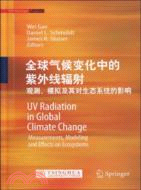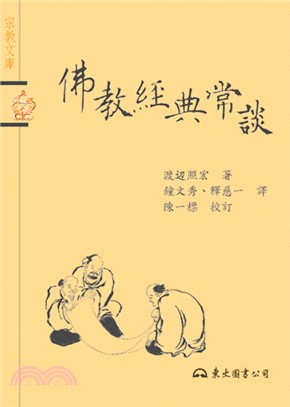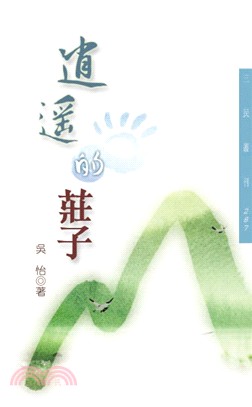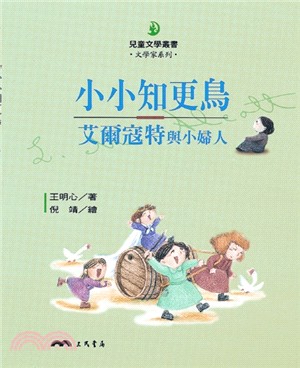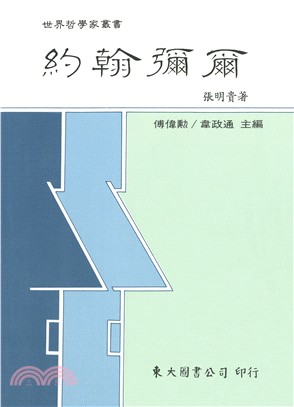商品簡介
對于涉及全球氣候變化、氣象學、氣候學、環境科學、生物學和農林科學的大專院校高年級本科生、研究生和教師,《全球氣候變化中的紫外線輻射:觀測、模擬及其對生態系統的影響》是一本很有價值的參考書。相關領域的科學家、決策者和普通公眾亦能受益于此書。
目次
1 A Climatology of UV Radiation, 1979- 2000, 65S - 65N
1.1 Introduction
1.2 Method
1.3 Results
1.3.1 Satellite-Derived UV Climatologies
1.3.2 Comparison with Ground-Based Measurements
1.3.3 Discussion of Uncertanties
1.4 Conclusions
Acknowledgements
References
2 Balancing the Risks and Benefits of Ultraviolet Radiation
2.1 Introduction
2.2 Long Term Changes in UVEry
2.3 Geographical Variability in UVEry
2.4 Peak UV
2.4.1 Peak UV Index
2.4.2 Peak UV Daily Dose
2.5 Comparing Weighting Functions for Erythema and Vitamin D
2.6 Seasonal and Diurnal Variation of UVE~y and UVvitD
2.7 Global Climatologies of UVE~y and UVvitD
2.8 Relationship Between UVvitD and UVEry
2.9 Production of Vitamin D from Sunlight
2.10 Calculation of Optimal Times for Exposure to Sunlight
2.11 An Inconsistency
2.12 Conclusions
Acknowledgements
References
3 Climatology of Ultraviolet Radiation at High Latitudes Derived from Measurements of the National Science Foundations Ultraviolet Spec-tral Irradiance Monitoring Network
3.1 Introduction
3.2 Data Analysis
3.2.1 Data
3.2.2 Establishment of Climatologies
3.2.3 Estimates of Historical UV Indices
3.3 UV Index Climatology
3.3.1 South Pole
3.3.2 McMurdo Station
3.3.3 Palmer Station
3.3.4 Ushuaia
3.3.5 San Diego
3.3.6 Barrow
3.4 Climatology ofUV-A Irradiance
3.5 Comparison of Radiation Levels at Network Sites
3.6 Conclusions and Outlook
Acknowledgements
References
4 UV Solar Radiation in Polar Regions: Consequences for the Environment and Human Health
4.1 Introduction
4.2 Networks and Databanks
4.3 Impact of Solar UV on the Environment
4.3.1 Effect of the Environment on Solar UV
4.4 Impact of Solar UV on Human Health
4.4.1 Information and Protection Programs
4.4.2 Dosimetry, UV Modeling, and Instruments
4.5 Concluding Remarks
References
5 Changes in Ultraviolet and Visible Solar Irradiance 1979 to 2008
5.1 Introduction
5.2 Instrumentation
5.3 Detection of Long-Term Change
5.3.1 Radiation Amplification Factor
5.3.2 Different Definitions of RAF
5.3.3 Estimating UV Trends: Discussion
5.3.4 Reduction ofUV Irradiance by Clouds and Aerosols
5.3.5 Stokes Derivation of Cr=(1-R)/(1-Rc)
5.3.6 UV Absorption
5.3.7 Estimating Zonal Average UV Change
5.3.8 Estimating UV Trends: Satellites
5.3.9 Estimating UV Trends: Ground-Based
5.4 UV in the Polar Regions
5.5 Human Exposure to UV
5.6 UV Index and Units
5.7 Action Spectra and Irradiance Trends
5.8 UV Summary
Appendix 5.1 Calculating RAF(0 )
Acknowledgements
References
6 The Brewer Spectrophotometer
6.1 Introduction
6.2 History
6.3 The Instrument
6.3. I The Fore-Optics
6.3.2 The Spectrometer
6.3.3 The Photomultiplier Housing
6.3.4 Support Electronics
6.3.5 The Control Computer
6.4 Corrections Applied to Data
6.4.1 Dark Count
6.4.2 Dead Time
6.4.3 Stray Light
6.4.4 Temperature Response
6.4.5 Neutral Density Filters
6.4.6 Cosine Response
6.4.7 Intemal Polarization
6.5 Measurement of Total Ozone
6.5.1 Measurement Technique
6.5.2 Calibration
6.6 Measurement of Spectral UV Radiation
6.7 Measurement of Other Atmospheric Variables
6.7.1 Vertical Profile of Ozone
6.7.2 Atmospheric SO2
6.7.3 Atmospheric NOz
6.7.4 Aerosol Optical Depth
6.7.5 Effective Temperature of Atmospheric Ozone
6.8 The Brewer Spectrophotometer as a Powerful Research Tool
6.9 Summary
Acknowledgements
References
7 Techniques for Solar Dosimetry in Different Environments
7.1 Introduction
7.2 UV Dosimetry and Minimization Strategies
7.3 Miniaturization of Polysulphone Dosimeters
7.4 Measurements on Plants
7.5 Long-Term UV Dosimeters
7.6 Vitamin D Effective UV Dosimetry
7.7 Discussion and Conclusions
References
8 An Ultraviolet Radiation Monitoring and Research Program for Agriculture
8.1 Introduction
8.2 Introduction to the USDA UVMRP (Purpose and History)
8.3 Monitoring Network
8.3.1 Sites and Coverage
8.3.2 Data Products Provided by UVMRP
8.4 Data Collection and Processing
8.4.1 UV-MFRSR Data Processing
8.4.2 Erythemally Weighted UV Irradiance
8.4.3 Langley Analysis
8.4.4 Data Processing for Other Measurements
8.5 Derived Products
8.5.1 Optical Depth
8.5.2 Daily Column Ozone
8.5.3 Synthetic Spectrum Data
8.6 Database Design and Website Interface
8.6.1 The Data
8.7 UVMRPs Role in UV-B Agricultural Effects Studies
8.7.1 Mississippi State University
8.7.2 Purdue University
8.7.3 Utah State University
8.7.4 University of Maryland
8.7.5 Washington State University
8.7.6 University of Illinois——Chicago
8.7.7 Highlights of Other Collaborations
8.8 Modeling of Agricultural Sustainability
8.9 Future Considerations
8.10 Summary
Acknowledgements
References
9 Radiative Transfer in the Coupled Atmosphere-Snow-Ice-Ocean(CASlO) System: Review of Modeling Capabilities
9.1 Introduction
9.2 Radiative Transfer Modeling
……
10 Comparative Analysis of UV-B Exposure Between Nimbus 7/TOMS Satellite Estimates and Ground-Based Measurements
10.1 Introduction
10.2 Materials and Methods
10.3 Results and Discussion
10.4 Conclusions
Acknowledgements
References
11 Ultraviolet Radiation and Its Interaction with Air Pollution
11.1 Introduction
11.2 Optics of the Atmosphere
11.3 Models and Measurements
11.4 Summary
References
12 Urban Forest Influences on Exposure to UV Radiation and Potential Consequences for Human Health
12.1 Introduction
12.2 Effects of Solar UV on Human Health and Epidemiology
12.3 UV Climatology
12.4 Urban Structural Influences
12.5 Public Health Information
12.6 Conclusions
Acknowledgements
References
13 Solar UV-B Radiation and Global Dimming: Effects on Plant Growth and UV-Shielding
13.1 Introduction
13.2 Methods
13.3 Results
13.4 Discussion
13.5 Concluding Remarks
Acknowledgements
References
14 Effects of Ultraviolet-B Radiation and lts Interactions with Climate Change Factors on Agricultural Crop Growth and Yield
14.1 Introduction
14.2 Abiotic Stress Factors and Crop Yield
14.3 Crop Responses to UV-B and Other Climate Change Factors
14.4 Abiotic Stress Tolerance and Cultivar Screening Tools
14.5 Climate Change and Aerobiology and Public Health
14.6 Concluding Remarks
Acknowledgements
References
15 Assessment of DNA Damage as a Tool to Measure UV-B Tolerance in Soybean Lines Differing in Foliar Flavonoid Composition
15.1 Introduction
15.2 Materials and Methods
15.3 Results and Discussion
15.4 Conclusions
Acknowledgements
References
16 Physiological Impacts of Short-Term UV Irradiance Exposures on Cultivars of Glycine Max
16.1 Introduction
16.2 Materials and Methods
16.3 Results and Discussion
16.4 Summary and Conclusions
Acknowledgements
References
17 UV-Effects on Young Seedlings of Soybean: Effects in Early Development and Long-Term Effects
17.1 Introduction
17.2 Results and Discussion
17.3 Conclusions
17.4 Methods
Acknowledgements
References
18 Characteristics of UV-B Radiation Tolerance in Broadleaf Trees in Southern USA
18 1 Introduction
18.2 Methodology
18.3 Results and Discussion
18.4 Conclusions
Acknowledgements
References
Index
主題書展
更多主題書展
更多書展本週66折
您曾經瀏覽過的商品
購物須知
大陸出版品因裝訂品質及貨運條件與台灣出版品落差甚大,除封面破損、內頁脫落等較嚴重的狀態,其餘商品將正常出貨。
特別提醒:部分書籍附贈之內容(如音頻mp3或影片dvd等)已無實體光碟提供,需以QR CODE 連結至當地網站註冊“並通過驗證程序”,方可下載使用。
無現貨庫存之簡體書,將向海外調貨:
海外有庫存之書籍,等候約45個工作天;
海外無庫存之書籍,平均作業時間約60個工作天,然不保證確定可調到貨,尚請見諒。
為了保護您的權益,「三民網路書店」提供會員七日商品鑑賞期(收到商品為起始日)。
若要辦理退貨,請在商品鑑賞期內寄回,且商品必須是全新狀態與完整包裝(商品、附件、發票、隨貨贈品等)否則恕不接受退貨。




